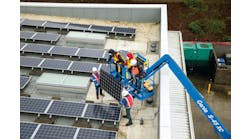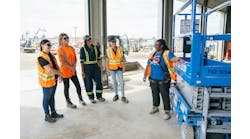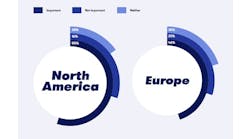Construction put in place increased 0.9 percent in May to a seasonally adjusted annual rate of $1.18 trillion, the Census Bureau announced recently. For the January-May period, spending fell 3.9 percent from the same period in 2006. Private nonresidential spending increased 2.7 percent in May and 18 percent year-to-date, and public spending rose 2.1 and 11 percent respectively, helping to offshoot private residential spending, which dropped 0.8 percent in May and 19 percent year-to-date.
The biggest year-to-date jump in private spending has been in lodging construction, up 60 percent, while office spending rose 26 percent, hospitals 22 percent and multi-retail, including big box and other merchandise stores, shopping centers and malls, rose 20 percent.
The two major public construction categories, highway and road, and education posted solid growth with highway construction up 8.2 percent for the first five months of 2007 and education spending up a smart 9.9 percent.
Single-family residential construction dropped 1.4 percent in May and 27 percent year-to-date, while multi-family residential spending was essentially flat year over year.
As for strong markets, the Bureau of Labor Statistics reported employment by metro area from May 2006 to May 2007, with the largest percentage gains being in Gulfport-Biloxi, Miss., 10.2 percent, largely based on recovery from the effects of Hurricane Katrina; Provo-Orem, Utah, 5.7 percent; Jacksonville, N.C., 5.3 percent; Madera, Calif., and St. George, Utah, each 5.2 percent.
Cities with the largest rate of population growth from July 2005 to July 2006 included North Las Vegas, Nev., 12 percent; McKinney, Texas (near Dallas), 11 percent; Port St. Lucie, Fla., 10 percent; and Cape Coral, Fla., and Gilbert, Ariz. (near Phoenix), 8 percent.





